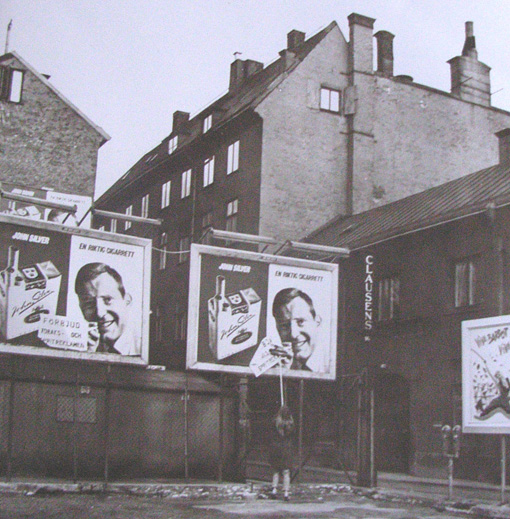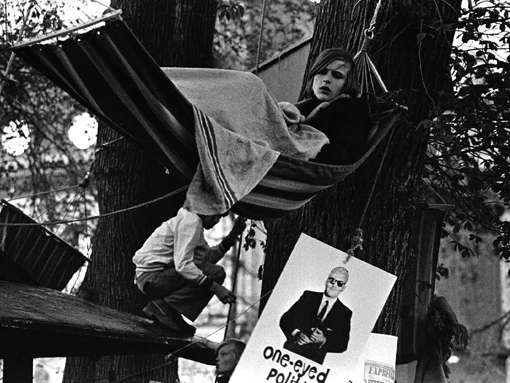 |
Folkrörelser och Protester Start | Om oss | Forum | Nordiskt
nyhetsbrev | Kampanjer | Datum |
Uppslagsverk | Folkrorelser
| Arbetare | Allmänningar
| Bönder | Fred
| Kvinnor
| Miljö | Övriga | |
 |
Stockholm
1972
|
The origins of the alternative initiatives
A TUG activist in the Provie movement covers tobacco
propaganda in 1966 In the summer of 1967, they arranged an international environmental camp in Stockholm where contacts were formalized. The same group organized a scientifically more ambitious camp in London in 1970 and in connection with this an ”international traffic revolution” against motoring, which also got a Stockholm branch. One year later, representatives of the group attended a conference for young scientists in Hamilton, Canada, where a group called the Oi Committee was formed to mobilize for the Stockholm Conference. About the same people also gathered at a UNESCO meeting in 1972 to formulate a coherent critique of the Rome Club's position. The atmosphere in Stockholm in the summer of 1971 was a bit intoxicating after the battle of the elms, where the population won a victory, concretely by saving a beautiful section of trees in the center of the city from an unnecessary felling but also symbolically. The victory was signaled by a resounding ”Enough is enough”. After the action that stopped the police-guarded felling attempts, a week-long festival of entertainment and information under the trees followed, when about a quarter of a million Stockholmers came to the scene. After that, the politicians gave up and the trees still stand today. Everything seemed possible and when it became known to some environmental activists that a year later thousands of journalists would come to cover the UN conference in Stockholm, the discussions started about how the opportunity should be used best. These initial conversations were also attended by the young researchers and developing country activists mentioned above. An informal network called Powwow was formed. Below: The elms occupied in 1971
|

